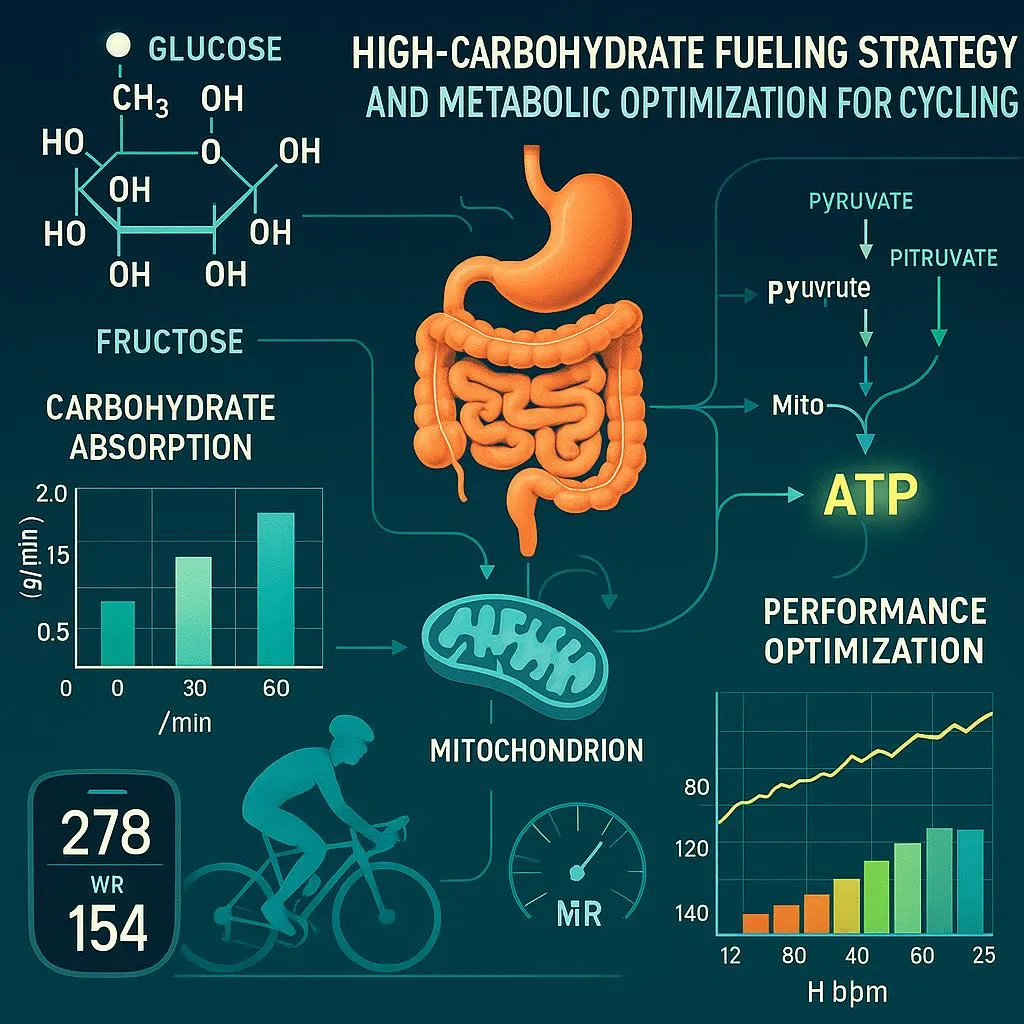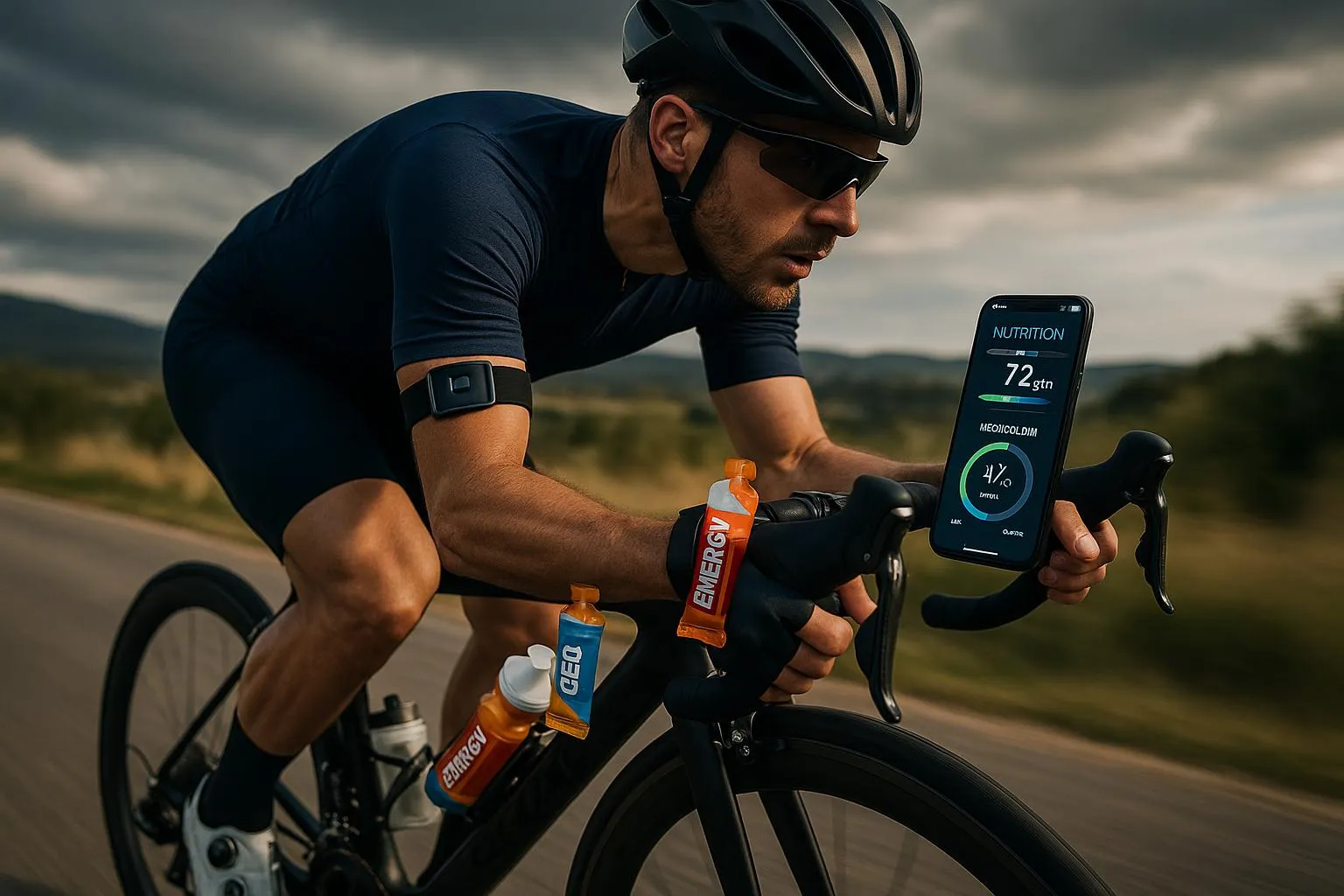The landscape of cycling nutrition and fueling strategies is undergoing a revolutionary transformation in 2025, driven by breakthrough technologies that bridge the gap between laboratory-grade metabolic analysis and real-world training applications. The launch of TrainingPeaks’ Fueling Insights feature, developed in collaboration with renowned physiologist Dr. Iñigo San Millán, represents a paradigm shift in how cyclists approach nutrition optimization, moving from generalized guidelines to personalized, data-driven fueling strategies that can dramatically improve performance and reduce gastrointestinal distress.
This technological revolution extends far beyond simple calorie counting or basic macronutrient tracking, incorporating sophisticated algorithms that analyze individual metabolic profiles, real-time power data, and physiological responses to provide unprecedented insights into optimal fueling strategies. The integration of decades of respiratory exchange ratio (RER) lab testing data with practical training applications creates opportunities for cyclists to access elite-level nutrition science that was previously available only to professional athletes with access to specialized laboratory facilities.
The emergence of high-carbohydrate fueling strategies, pioneered by elite athletes like Tadej Pogačar under San Millán’s guidance, demonstrates the practical application of advanced nutrition science in achieving breakthrough performance results. These strategies, which can involve consuming up to 125 grams of carbohydrates per hour, represent a significant departure from traditional fueling approaches and require sophisticated understanding of individual metabolic capacity and gastrointestinal tolerance.
The convergence of wearable technology, advanced analytics, and evidence-based nutrition science is creating new possibilities for optimizing cycling performance through precision nutrition approaches that account for individual variability, training demands, and competitive objectives. This revolution promises to transform not only how elite athletes approach fueling but also how recreational cyclists can optimize their nutrition for improved performance, faster recovery, and enhanced training adaptations.
The Science Behind Metabolic Profiling and Fueling Optimization
The foundation of advanced cycling nutrition technology rests on sophisticated understanding of individual metabolic profiles and how they influence optimal fueling strategies during exercise. The development of TrainingPeaks’ Fueling Insights represents the culmination of decades of research into respiratory exchange ratio testing, substrate utilization patterns, and the relationship between exercise intensity and metabolic fuel selection.
The proprietary algorithm underlying this technology incorporates data from over 250 highly calibrated laboratory tests, creating a comprehensive database of metabolic responses that enables accurate prediction of fat and carbohydrate utilization during power-based cycling workouts. This extensive dataset provides the foundation for categorizing athletes according to one of four distinct metabolic profiles, each with specific characteristics and optimal fueling strategies [1].
The integration of gender-specific considerations into metabolic profiling represents a significant advancement in nutrition science, acknowledging the physiological differences that influence substrate utilization patterns between male and female athletes. These differences extend beyond simple body composition variations to include hormonal influences, metabolic efficiency patterns, and gastrointestinal tolerance factors that significantly impact optimal fueling strategies.
The real-time analysis capabilities of modern fueling technology enable dynamic adjustment of nutrition recommendations based on changing exercise demands, environmental conditions, and physiological responses. This adaptive approach represents a fundamental departure from static nutrition plans, providing cyclists with responsive guidance that optimizes fueling decisions throughout training sessions and competitive events.
The validation of these technological approaches through collaboration with elite athletes and world-class physiologists ensures that the underlying science meets the highest standards of accuracy and practical applicability. The involvement of Dr. Iñigo San Millán, whose work with Team UAE Emirates has contributed to multiple Grand Tour victories, provides credibility and real-world validation for these advanced nutrition technologies.
The integration of power meter data with metabolic profiling creates unprecedented opportunities for precise nutrition optimization, enabling cyclists to understand exactly how their fueling strategies impact performance outcomes. This data-driven approach eliminates much of the guesswork traditionally associated with nutrition planning, providing objective feedback on the effectiveness of different fueling approaches.

High-Carbohydrate Fueling Strategies and Gastrointestinal Adaptation
The emergence of high-carbohydrate fueling strategies as a dominant trend in elite cycling represents a significant evolution in sports nutrition science, challenging traditional assumptions about carbohydrate absorption limits and gastrointestinal tolerance. The successful implementation of strategies involving up to 125 grams of carbohydrates per hour by elite athletes like Tadej Pogačar demonstrates the potential for dramatically increased carbohydrate intake when properly implemented and progressively adapted.
The physiological basis for high-carbohydrate fueling rests on understanding the multiple pathways for carbohydrate absorption in the gastrointestinal tract and how these pathways can be optimized through strategic selection of carbohydrate sources and progressive adaptation protocols. The combination of glucose and fructose in specific ratios enables utilization of both SGLT1 and GLUT5 transporters, effectively increasing the total carbohydrate absorption capacity beyond what is possible with single carbohydrate sources.
The gastrointestinal adaptation process required for successful implementation of high-carbohydrate fueling strategies involves progressive increases in carbohydrate intake during training, allowing the digestive system to adapt to higher carbohydrate loads without experiencing distress. This adaptation process can take several weeks to months and requires careful monitoring of tolerance and adjustment of intake rates based on individual responses.
The timing and composition of high-carbohydrate fueling strategies must be carefully coordinated with exercise intensity, duration, and individual metabolic characteristics to optimize effectiveness while minimizing gastrointestinal distress. The integration of advanced fueling technology enables precise timing of carbohydrate intake based on real-time metabolic demands and absorption capacity.
The practical implementation of high-carbohydrate fueling strategies requires sophisticated understanding of product selection, preparation methods, and delivery systems that can provide the necessary carbohydrate intake without compromising palatability or causing gastrointestinal issues. The development of specialized sports nutrition products designed specifically for high-carbohydrate fueling has been essential for making these strategies practical for widespread adoption.
The performance benefits of properly implemented high-carbohydrate fueling strategies extend beyond simple energy provision to include improved cognitive function, reduced perceived exertion, and enhanced capacity for high-intensity efforts during prolonged exercise. These benefits are particularly pronounced during events lasting longer than two hours, where carbohydrate availability becomes a limiting factor for performance.
Technology Integration and Real-Time Optimization
The integration of advanced nutrition technology with existing training and performance monitoring systems creates comprehensive platforms for optimizing all aspects of cycling performance through coordinated approaches to training, recovery, and nutrition. The seamless integration of fueling insights with power meter data, heart rate monitoring, and training load management enables holistic optimization strategies that address multiple performance factors simultaneously.
The real-time feedback capabilities of modern nutrition technology enable dynamic adjustment of fueling strategies based on changing conditions, physiological responses, and performance objectives during training sessions and competitive events. This adaptive approach represents a significant advancement over static nutrition plans, providing cyclists with responsive guidance that optimizes fueling decisions in real-time.
The data visualization and analysis capabilities of advanced nutrition platforms enable cyclists and coaches to identify patterns, trends, and optimization opportunities that would be impossible to detect through traditional monitoring approaches. The integration of multiple data streams creates comprehensive pictures of how nutrition strategies impact performance outcomes, recovery rates, and training adaptations.
The predictive capabilities of advanced nutrition technology enable proactive optimization of fueling strategies based on planned training sessions, competitive events, and individual response patterns. This forward-looking approach allows cyclists to prepare optimal nutrition strategies in advance rather than reacting to immediate needs during exercise.
The integration with cycling performance and health optimization approaches creates synergies that enhance the overall effectiveness of training and nutrition interventions. The coordination of nutrition optimization with training periodization, recovery protocols, and health monitoring creates comprehensive performance enhancement strategies.
The mobile and wearable technology integration enables convenient access to nutrition guidance and monitoring capabilities during training and competition, ensuring that advanced nutrition strategies can be implemented effectively in real-world conditions. The user interface design and accessibility features of these technologies are critical for ensuring practical adoption and consistent use.
Personalization and Individual Metabolic Characteristics
The recognition of significant individual variability in metabolic characteristics and optimal fueling strategies represents a fundamental shift away from one-size-fits-all nutrition approaches toward personalized strategies that account for unique physiological characteristics, training adaptations, and performance objectives. The development of technologies that can accurately assess and account for these individual differences is essential for optimizing nutrition strategies.
The four metabolic profiles identified through advanced testing and analysis provide a framework for understanding how different individuals respond to various fueling strategies and exercise intensities. These profiles account for differences in fat oxidation capacity, carbohydrate utilization efficiency, and metabolic flexibility that significantly influence optimal nutrition approaches.
The gender-specific considerations incorporated into advanced nutrition technology acknowledge the physiological differences that influence substrate utilization patterns, gastrointestinal tolerance, and optimal fueling strategies between male and female athletes. These differences extend beyond simple body composition variations to include hormonal influences and metabolic efficiency patterns that require specific consideration in nutrition planning.
The adaptation and learning capabilities of advanced nutrition technology enable continuous refinement of recommendations based on individual responses, training adaptations, and changing physiological characteristics. This dynamic approach ensures that nutrition strategies remain optimized as athletes develop and their metabolic characteristics evolve.
The integration of genetic testing and biomarker analysis with advanced nutrition technology creates opportunities for even more precise personalization of fueling strategies based on individual genetic predispositions and physiological characteristics. This emerging area of sports nutrition science promises to further enhance the precision and effectiveness of nutrition optimization approaches.
The consideration of lifestyle factors, dietary preferences, and practical constraints in personalized nutrition strategies ensures that advanced fueling approaches can be successfully implemented within the context of individual circumstances and preferences. The balance between optimal nutrition science and practical feasibility is essential for long-term adherence and success.
Impact on Training Adaptations and Recovery
The optimization of nutrition strategies through advanced technology has significant implications for training adaptations, recovery processes, and overall performance development that extend far beyond immediate fueling benefits. The coordination of nutrition optimization with training periodization creates opportunities for enhanced adaptations and improved training outcomes.
The relationship between optimal fueling strategies and training adaptations involves complex interactions between substrate availability, metabolic stress, and cellular signaling pathways that influence adaptation responses. The precise control of nutrition timing and composition enabled by advanced technology allows for strategic manipulation of these factors to optimize specific adaptation outcomes.
The impact of optimized nutrition strategies on recovery processes includes improvements in glycogen replenishment, protein synthesis, and inflammatory responses that can significantly enhance the effectiveness of training programs. The integration of recovery nutrition optimization with cycling recovery technology revolution approaches creates comprehensive recovery strategies.
The periodization of nutrition strategies in coordination with training phases enables optimization of different adaptation objectives throughout the training cycle, from base building phases that emphasize fat oxidation development to competition phases that prioritize carbohydrate utilization efficiency. This strategic approach maximizes the effectiveness of both training and nutrition interventions.
The monitoring of training adaptations through advanced nutrition technology provides valuable feedback on the effectiveness of nutrition strategies and enables continuous optimization of approaches based on objective performance outcomes. This data-driven approach ensures that nutrition strategies contribute effectively to overall performance development.
The integration of sleep, stress, and lifestyle factors with nutrition optimization creates comprehensive approaches to supporting training adaptations and recovery processes. The recognition that nutrition is just one component of a complex system of factors influencing performance enables more effective overall optimization strategies.
Professional Application and Elite Performance
The application of advanced nutrition technology in professional cycling has demonstrated remarkable results, with elite athletes achieving breakthrough performances through optimized fueling strategies that were previously impossible to implement effectively. The success of athletes like Tadej Pogačar using high-carbohydrate fueling strategies under Dr. San Millán’s guidance provides compelling evidence for the effectiveness of these approaches.
The integration of advanced nutrition technology with professional team support structures creates comprehensive performance optimization systems that address all aspects of fueling, from daily nutrition planning to race-day execution. The coordination between sports scientists, nutritionists, and coaching staff enables seamless implementation of sophisticated nutrition strategies.




